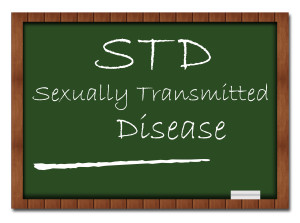The Most Common STDs Impacting Women
 Know the risks, signs, and symptoms of the most common STDs in women
Know the risks, signs, and symptoms of the most common STDs in women
Women who are sexually active, or who are thinking of becoming active, should know the risks involved, which includes the potential contraction of a sexually transmitted disease (STD). There are several STDs that sexually active women should know and understand before engaging in sexual behavior. The chart below outlines the most common STDs impacting women, how they can be contracted, their symptoms, and how they can be prevented.
STD: Human Papillomavirus (HPV)
Contraction: With more than 30 types of HPV, nearly every sexually active person will contract a form of HPV at some point in their lives. HPV can be contracted through vaginal, anal, or oral sex, and by skin-to-skin contact.
Signs & Symptoms:
- Most types of HPV have no symptoms, cause no harm, and your body will cure itself
- Other forms cause genital warts, while others infect the mouth and throat
- The worst strains can cause cancer of the mouth, throat, or cervix
Prevention: Two vaccines are available to protect against HPV, and one also protects against genital warts, vaginal cancer, and anal cancer. The CDC recommends young women ages 11 to 26 to get vaccinated for HPV.
STD: Chlamydia
Contraction: Chlamydia is the most common STD in the United States. It is spread by vaginal, anal, or oral sex.
Signs & Symptoms: Only 25 percent of women see symptoms, which can include:
- Odd discharge from your vagina
- Pain or burning during urination
Prevention: As with all STDs, practicing safe sex practices can help protect against contraction. Safe sex practices include:
- Abstinence
- Committing to one monogamous, long-term relationship with someone who has been tested for STDs
- Using latex condoms correctly and consistently
STD: Gonorrhea
Contraction: Gonorrhea is a bacterial STD, often contracted with Chlamydia during oral, vaginal, or anal sex.
Signs & Symptoms: Only 20 percent of women see symptoms, which can include:
- Odd discharge from your vagina
- Pain or burning during urination
Prevention: Follow the safe sex practices listed above and get tested right away in you develop genital warts.
STD: Syphilis
Contraction: Contracted through vaginal, anal, and oral sex. It is spread through direct contact of sores on a sexual partner, usually found on the genitals, anus, rectum, mouth and lips.
Signs & Symptoms: There are four stages to Syphilis, each with varying symptoms:
- Stage 1: Development of a sore that can look like a cut, an ingrown hair, or a bump
- Stage 2: Development of a rash on your body followed by sores in your mouth, vagina, or anus
- Stage 3: Symptoms usually disappear. This stage can last for years, or the rest of your life
- Stage 4: Affects 15 percent of those untreated and includes organ, nerve, and brain damage
Prevention:
- Follow safe sex guidelines
- Get tested regularly for STDs
- See your doctor if you develop any sores, blisters, bumps, or rashes
- Avoid sexual contact with anyone who has visible sores, discharge, blisters, or bumps in the genital area
STD: Herpes
Contraction: This easily contracted STD is spread by skin-to-skin contact with an infected sexual partner, including contact with the areas of the skin that a condom does not cover.
Signs & Symptoms:
- The primary symptom is painful blisters around the vagina or anus, or inside the vagina and anus, where they can be neither seen nor felt
- Both strains of herpes, HSV-1 and HSV-2 can cause genital herpes
- Other symptoms include flu-like symptoms, fever, and swollen glands
Prevention: Practice safe sex or absinence.
STD: Trichomoniasis
Contraction: This STD is caused by a tiny parasite, and infects more women than men. Trichomoniasis is contracted through vaginal contact.
Signs & Symptoms:
- 30 percent of those with the disease experience symptoms, which include itching, burning, or sore genitals
- Smelly, clear, white, yellowish or greenish discharge
Prevention:
- Practice safe sex practices
- Avoid sexual contact with anyone displaying the symptoms of Trichomoniasis
STD: HIV/AIDS
Contraction: HIV is the virus that causes AIDS. The virus is passed through fluids such as blood, semen, vaginal fluids, and breast milk. It can be transmitted by vaginal or anal intercourse or sharing a needle with someone who is infected.
Signs & Symptoms:
- Flu-like symptoms
- Muscle aches
- Fatigue
- Slight fever
- Weight loss
- Diarrhea
- Eventually, HIV will destroy the immune system, stopping the body’s ability to fight off infections
Prevention:
- Practice safe sex guidelines
- Use a condom correctly every time you have vaginal, oral, or anal sex
- Do not inject drugs, but if you do, only use sterile injection equipment and water, and never share your equipment with others
If you are experiencing anything out of the norm, don’t wait to get see your OB-GYN. He or she is familiar with STDs and can get you the help and treatment you need.
More